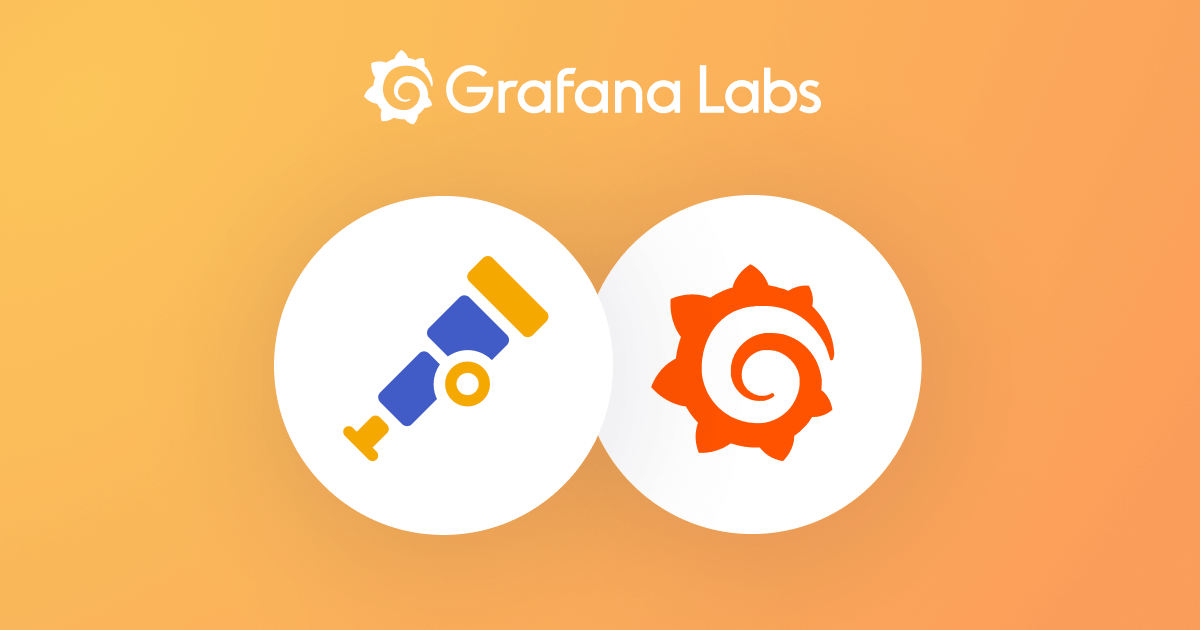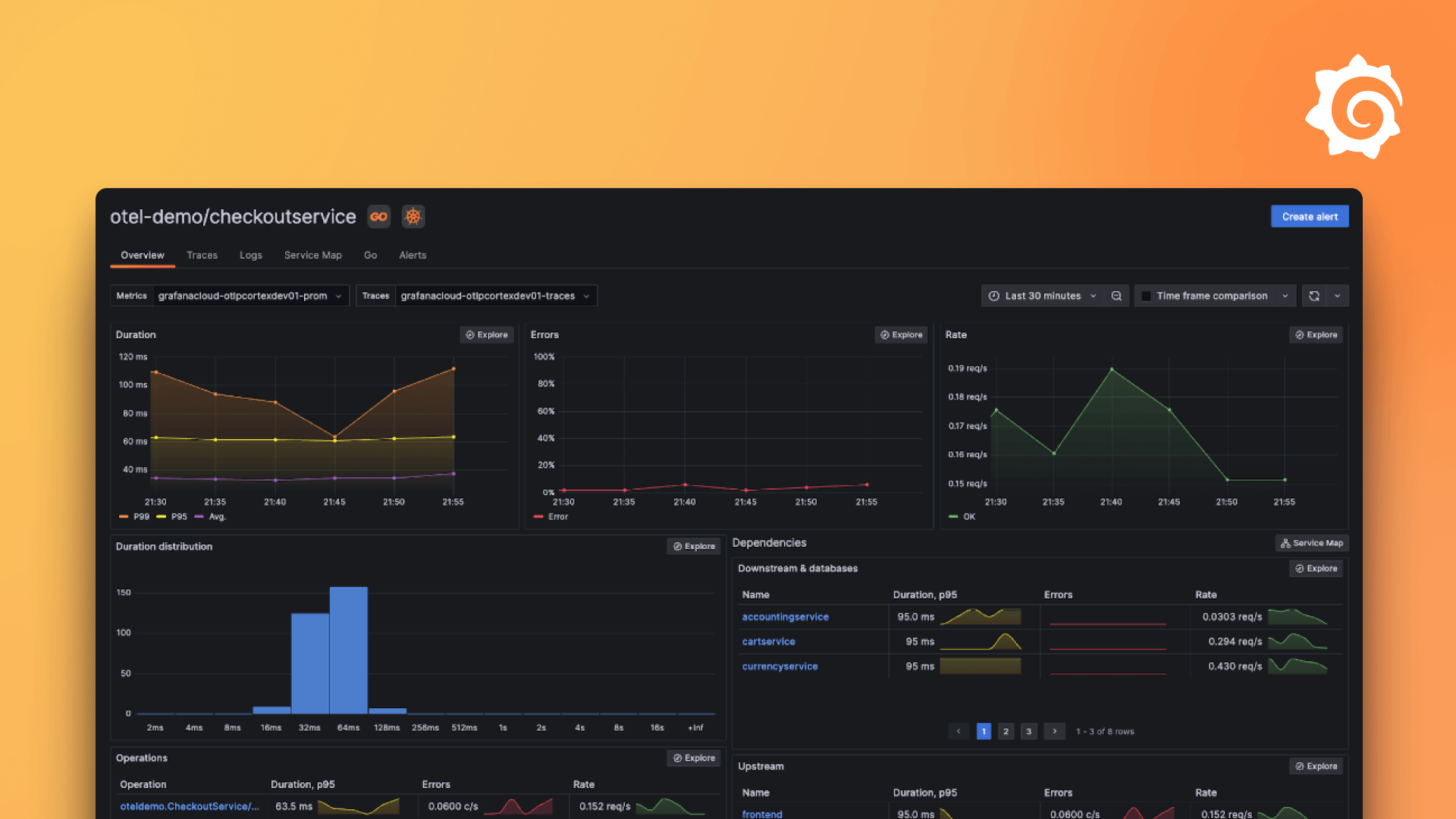设置元监控以收集 Alloy 遥测数据
你可以配置 Alloy 收集其自身的遥测数据并将其转发到你选择的后端。
本主题介绍如何收集和转发 Alloy 的指标、日志和追踪数据。
本主题中使用的组件和配置块
开始之前
- 确定 Alloy 的遥测数据发送到何处。
- 熟悉 Alloy 中的组件概念。
元监控指标
Alloy 使用 Prometheus 暴露格式公开其内部指标。
指标通过 --server.http.listen-addr 命令行标志配置的地址上的 /metrics 端点公开。例如,127.0.0.1:12345/metrics。但是,也可以使用 prometheus.exporter.self 组件访问相同的指标。
在本任务中,你将使用 prometheus.exporter.self 和 prometheus.scrape 组件抓取 Alloy 的内部指标并将其转发到兼容的 Alloy 组件。
将以下
prometheus.exporter.self组件添加到你的配置中。该组件不接受任何参数。prometheus.exporter.self "<SELF_LABEL>" { }替换以下内容
<SELF_LABEL>:组件的标签,例如default或metamonitoring。标签在同一配置文件中的所有prometheus.exporter.self组件中必须唯一。
将以下
prometheus.scrape组件添加到你的配置文件中。prometheus.scrape "<SCRAPE_LABEL>" { targets = prometheus.exporter.self.<SELF_LABEL>.targets forward_to = [<METRICS_RECEIVER_LIST>] }替换以下内容
<SCRAPE_LABEL>:抓取组件的标签,例如default。标签在同一配置文件中的所有prometheus.scrape组件中必须唯一。<METRICS_RECEIVER_LIST>:要转发指标的组件接收器列表,用逗号分隔。例如,要发送到远程写入组件,使用prometheus.remote_write.WRITE_LABEL.receiver。类似地,要将数据发送到重新打标签组件,使用prometheus.relabel.PROCESS_LABEL.receiver。要在 OTLP 格式中使用数据,你可以将数据发送到转换器组件,例如otelcol.receiver.prometheus.OTEL.receiver。
以下示例演示了配置可能的一系列组件。
prometheus.exporter.self "default" {
}
prometheus.scrape "metamonitoring" {
targets = prometheus.exporter.self.default.targets
forward_to = [prometheus.remote_write.default.receiver]
}
prometheus.remote_write "default" {
endpoint {
url = "http://mimir:9009/api/v1/push"
}
}元监控日志
logging 块定义了 Alloy 的日志行为。
在本任务中,你使用 logging 块将 Alloy 的日志转发到兼容组件。该块没有标签,每个配置文件只能提供一次。
将以下
logging配置块添加到你的配置文件的顶层。logging { level = "<LOG_LEVEL>" format = "<LOG_FORMAT>" write_to = [<LOGS_RECEIVER_LIST>] }替换以下内容
<LOG_LEVEL>:Alloy 日志使用的日志级别。如果未设置此属性,默认为info。<LOG_FORMAT>:Alloy 日志使用的日志格式。如果未设置此属性,默认为logfmt。<LOGS_RECEIVER_LIST>:要转发日志的组件接收器列表,用逗号分隔。例如,要发送到处理组件,使用loki.process.PROCESS_LABEL.receiver。类似地,要将数据发送到重新打标签组件,使用loki.relabel.PROCESS_LABEL.receiver。要在 OTLP 格式中使用数据,你可以将数据发送到转换器组件,例如otelcol.receiver.loki.OTEL.receiver。
以下示例演示了配置 logging 块并将其发送到兼容组件。
logging {
level = "warn"
format = "json"
write_to = [loki.write.default.receiver]
}
loki.write "default" {
endpoint {
url = "http://loki:3100/loki/api/v1/push"
}
}元监控追踪
tracing 块定义了 Alloy 的追踪行为。
在本任务中,你使用 tracing 块将 Alloy 内部追踪转发到兼容组件。该块没有标签,每个配置文件只能提供一次。
将以下
tracing配置块添加到你的配置文件的顶层。tracing { sampling_fraction = <SAMPLING_FRACTION> write_to = [<TRACES_RECEIVER_LIST>] }替换以下内容
<SAMPLING_FRACTION>:要保留的追踪数据的比例。如果未设置此属性,默认为0.1。<TRACES_RECEIVER_LIST>:要转发追踪数据的组件接收器列表,用逗号分隔。例如,要发送到 OpenTelemetry exporter 组件,使用otelcol.exporter.otlp.EXPORT_LABEL.input。
以下示例演示了配置 tracing 块并将其发送到兼容组件。
tracing {
sampling_fraction = 0.1
write_to = [otelcol.exporter.otlp.default.input]
}
otelcol.exporter.otlp "default" {
client {
endpoint = "tempo:4317"
}
}


